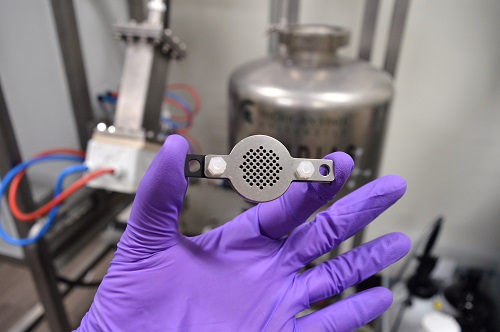The city of Grand Rapids has invested $300,000 in the technology, which scientists hope can become part of wastewater and landfill leachate treatment.
Source: mLIVE
By Garret Ellison | gellison@mlive.com
Date: 5/28/2019
In quest to destroy PFAS, MSU diamond tech shows promise
The Fraunhofer USA Center for Coatings and Diamond Technologies CCD has developed a method to destroy PFAS in contaminated water using boron-doped diamond electrodes. The city of Grand Rapids has invested $300,000 in the technology, which scientists hope can become part of wastewater and landfill leachate treatment.
In March, the city commission approved a $300,000 investment into the method for breaking apart the high-strength chemical bonds which have earned per- and polyfluoroalkyl substances, or PFAS, the nickname “forever chemicals.”
Eventually, the city hopes to deploy the technology at its wastewater plant, where PFAS from industrial discharges and landfill leachate are passing unimpeded through treatment into biosolid sludge and treated effluent that’s discharged to the Grand River.
“The potential is there to actually solve this problem,” said Nicole Pasch, acting assistant environmental services manager in Grand Rapids. “It’s not an immediate solution and it’ll be a long-term program. But at least the potential is there.”
The CCD team has developed a way to break down the carbon-fluorine bonds that allow PFAS compounds to withstand heat and repel water, grease and oil. Those properties, while valuable in the marketplace, are harmful in the environment and living organisms because the chemicals don’t naturally degrade.
For the entire article, please click HERE
Contact for Fraunhofer USA CCD: ccd-info(at)fraunhofer.org
